Finally I've found Laravel documentation how to make it work with Azure. To be more precise - PHP8 + NGINX. Here is the article link - https://azureossd.github.io/2022/04/22/PHP-Laravel-deploy-on-App-Service-Linux-copy/index.html
Hope it will be useful :-)
PHP 8 (NGINX)
PHP 8 on Azure App Service Linux use NGINX as the Web Server. To have NGINX route requests to /public we’ll have to configure a custom startup script. We can grab the existing default.conf under /etc/nginx/sites-available/default.conf and run cp /etc/nginx/sites-available/default.conf /home. This will copy the default.conf we need into /home so we can download it with an FTP client or any other tool that allows this.
This default.conf has the following line:
root /home/site/wwwroot;
We need to change it to the following:
root /home/site/wwwroot/public;
Next, under the location block we need to change it from:
location / {
index index.php index.html index.htm hostingstart.html;
}
to the following:
location / {
index index.php index.html index.htm hostingstart.html;
try_files $uri $uri/ /index.php?$args;
}
Now configure your actual startup.sh bash script. Note, the file name is arbitrary as long as it is a Bash (.sh) script. Configure the file along the lines of the below:
#!/bin/bash
echo "Copying custom default.conf over to /etc/nginx/sites-available/default.conf"
NGINX_CONF=/home/default.conf
if [ -f "$NGINX_CONF" ]; then
cp /home/default.conf /etc/nginx/sites-available/default
service nginx reload
else
echo "File does not exist, skipping cp."
fi
NOTE: $query_string can be used as well. See the official documentation here.
Our custom default.conf should look like the below:
server {
#proxy_cache cache;
#proxy_cache_valid 200 1s;
listen 8080;
listen [::]:8080;
root /home/site/wwwroot/public;
index index.php index.html index.htm;
server_name example.com www.example.com;
location / {
index index.php index.html index.htm hostingstart.html;
try_files $uri $uri/ /index.php?$args;
}
........
.....
...all the other default directives that were in this file originally...
}
Use an FTP client to upload both your startup.sh script and your custom default.sh to the /home directory for your PHP App Service.
Next, under ‘Configuration’ in the portal target /home/startup.sh (or whatever the startup script file name is).
Laravel App
Lastly, restart the App Service. This should now be using our custom startup script. Use LogStream or the Diagnose and Solve -> Application Logs detector, or other methods, to see the stdout from the script.
